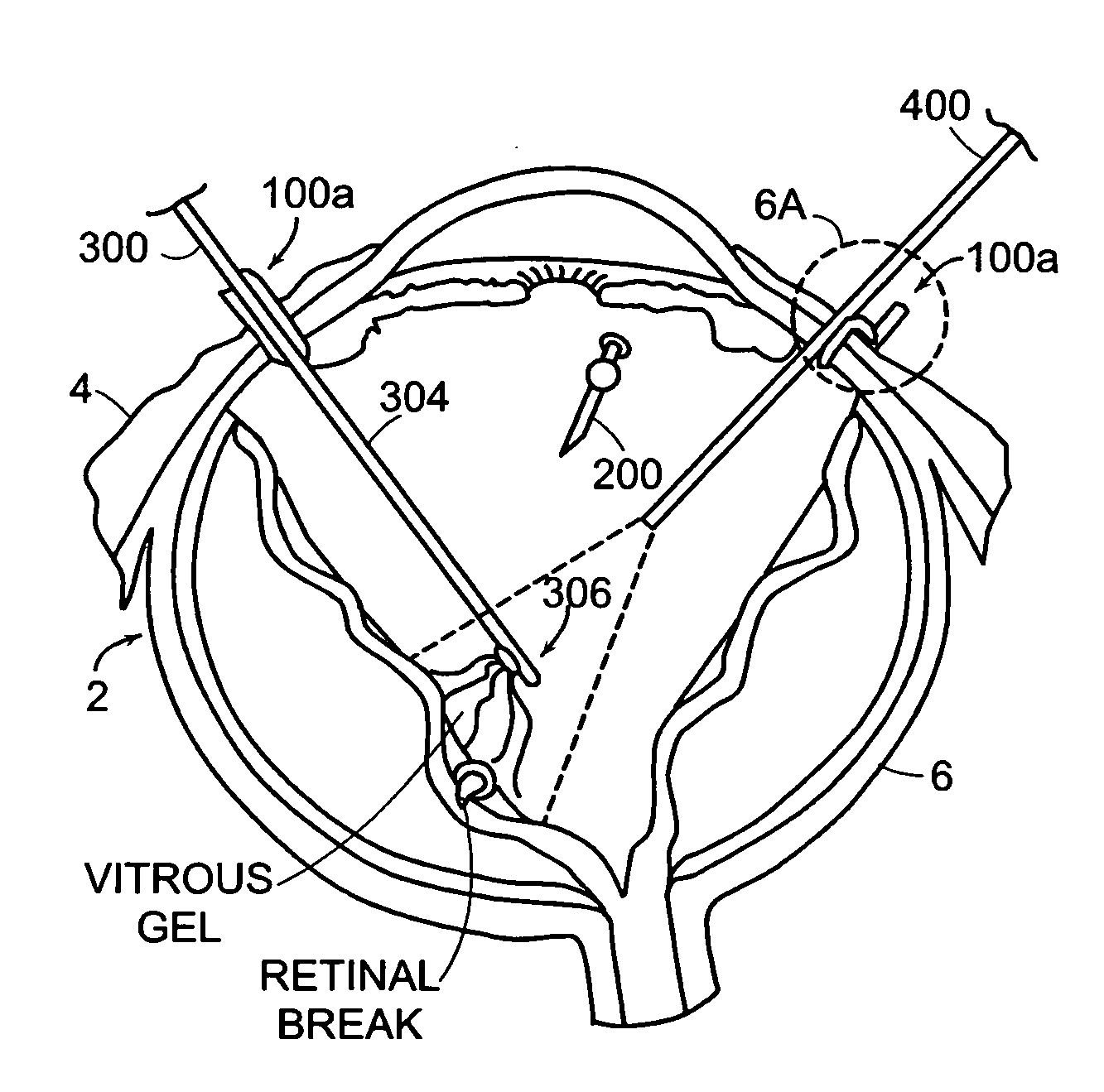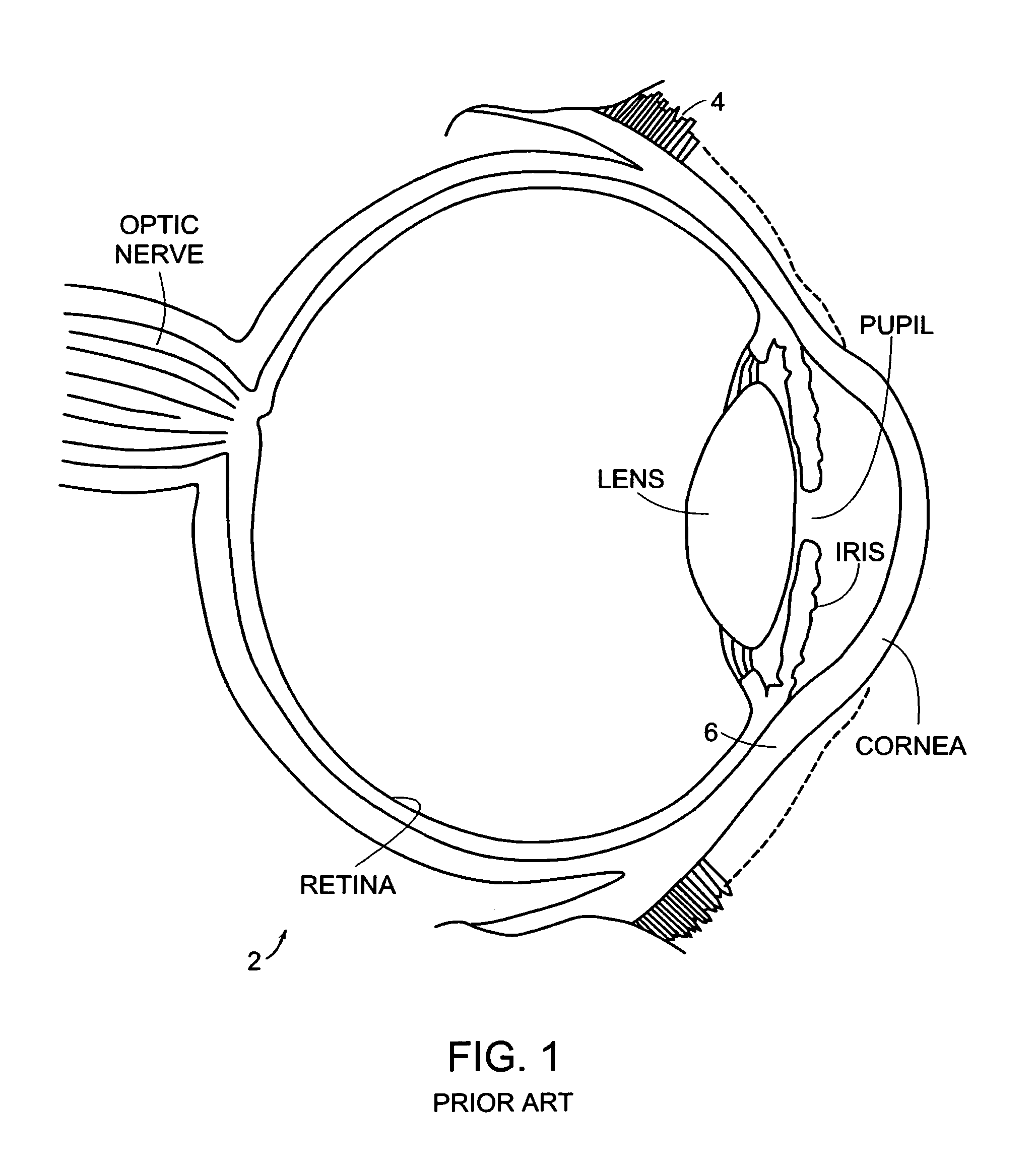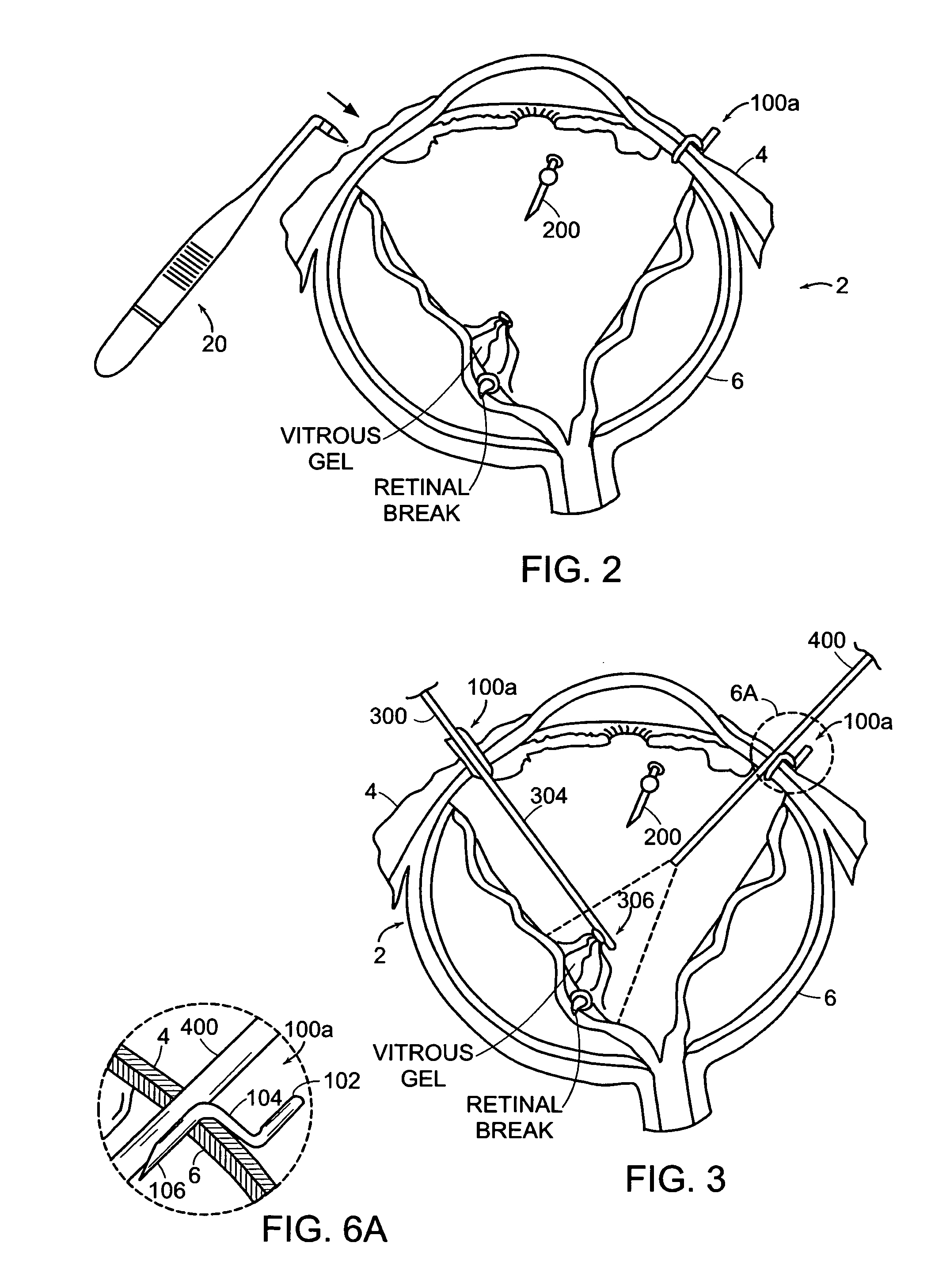Sutureless occular surgical methods and instruments for use in such methods
a surgical method and sutureless technology, applied in the field of sutureless surgical methods and instruments, can solve the problems of large incisions that are not easy to self-seal, and achieve the effect of minimizing damage to the retina
- Summary
- Abstract
- Description
- Claims
- Application Information
AI Technical Summary
Benefits of technology
Problems solved by technology
Method used
Image
Examples
second embodiment
[0068]Now referring to FIG. 8 there is shown an entry alignment device 100b according to the present invention that includes an insertion member 110 and a stop member 112 that is affixed about the exterior of the insertion member 110. The entry alignment device 100b of this embodiment is configured and arranged so that in use, the portion of the insertion member 110 that is below the stop member 112 is passed through each of the conjunctiva 4 and the sclera 6. Additionally, in use the entry alignment member 100b is inserted until the stop member 112 is proximal the exterior surface of the eye 2 similar to that shown for the stop portion 104 in FIG. 6A.
[0069]In the illustrated embodiment, an end of the insertion member 110 is securably received in the stop member 112. Alternatively, the entry alignment device is constructed such that the insertion and stop members 110,112 form an integral structure. In yet another embodiment, the insertion member 110 and stop member 112 are configure...
third embodiment
[0075]Now referring to FIG. 9 there is shown an entry alignment device 100c in the shape of a conventional cannula, that includes an insertion member 120 and a stop member 122 that is affixed to the insertion member. In a particular embodiment, the insertion member and the stop member form an integral, one-piece structure. The entry alignment device 100c of this embodiment is configured and arranged so that in use the portion of the insertion member 120 that is below the stop member 122 is passed through each of the conjunctiva 4 and the sclera 6. Additionally, in use the entry alignment member 100b is inserted until the stop member 122 is proximal the exterior surface of the eye 2 similar to that shown for the stop portion 104 in FIG. 6A.
[0076]In the illustrated embodiment, the insertion member 120 is a tubular member having a lumen 124 extending between the ends of the insertion member and the stop member 122 includes therein a through aperture 126 that communicates with the inse...
fourth embodiment
[0082]Now referring to FIGS. 10A,B there is shown entry alignment devices 100d,e according to the present invention that are formed by shaping a solid or hollow cylindrical member, for example a metal wire, into a predetermined shape or configuration. In FIG. 10A there is shown an entry alignment device 100d including an arcuate portion 130 from which extends two leg portions 132 that are spaced from each other and generally parallel to each other. Each leg portion includes an upper segment 134 and a lower segment 136, where the lower segment is at an angle with respect to the upper segment so that the upper segment.
[0083]The lower segments 136 are sized so that each extends through the conjunctiva 4 and sclera 6 when disposed in the entry aperture. The angle between the upper segments 134 and the lower segments 136 is established and the upper segments are sized so that the upper segments act as a stop, to limit the amount of insertion as well as to restrain the entry alignment dev...
PUM
 Login to View More
Login to View More Abstract
Description
Claims
Application Information
 Login to View More
Login to View More - R&D
- Intellectual Property
- Life Sciences
- Materials
- Tech Scout
- Unparalleled Data Quality
- Higher Quality Content
- 60% Fewer Hallucinations
Browse by: Latest US Patents, China's latest patents, Technical Efficacy Thesaurus, Application Domain, Technology Topic, Popular Technical Reports.
© 2025 PatSnap. All rights reserved.Legal|Privacy policy|Modern Slavery Act Transparency Statement|Sitemap|About US| Contact US: help@patsnap.com



